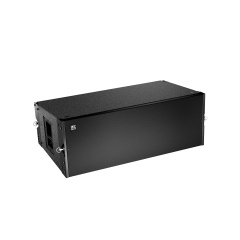Several items can be found on this list, and together they are the essential sound stage equipment for bringing in high-quality production, ensuring clear communication and making sure your audience has an experience not to forget. The most vital gear is a sound system which contains speakers, amplifiers and mixers. For midsize and larger venues, a powerful PA system (typically 2000 watts or more) may be required to effectively reach every corner of the audience area without distortion. Line array speakers: A line-array speaker is ideally suited to outdoor events or large concert halls as it delivers a consistent sound coverage across long distances.
Another important factor are the mixing consoles. They give sound techs appropriate access to adjust the audio levels, EQ, and effects on a per-channel basis so that an overall mix can be sculpted appropriately for whatever room they are in. Digital mixing: At least 24 channelsDigs such as this are all but a requirement for professional live events, combining often upwards of two dozen discrete audio sources (instruments or microphones), into one elegant package to mix the entire cocktail. The Allen & Heath dLive series, for instance is one of the most regarded as-line stageboxes and features some amazing processing horsepower to support even large scale events.
Microphones are essential equipment when it comes to capturing vocals and instruments. For vocals, a dynamic microphone like the Shure SM58 is popular because it can handle high sound pressure levels (SPL) and does not cost as much. Because of their wide frequency range and sensitivity, a condenser mic — such as the AKG C414, more commonly used for instruments or atmospheric sound. In addition, wireless microphone systems are a necessity for allowing performers to move about the stage unfettered by cables.
Performers need them to hear themselves, other musicians The monitors can be floor wedges of in-ear, depending on which the performers would like used. More and more, in-ear monitors are used because they deliver a clean mix tailored to each performer's needs directly into their precious little ear-holes without causing feedback issues. Shure PSM 300: This is a versatile and very easy to use in-ear monitor system that people all over the world like for its clarity.

Besides, subwoofers are also responsible for reinforcing the low-frequency response of the audio system. The reason 18-inch subwoofers tend to be popular in live sound is that, as we explored, they will push some air around when providing the big low end your listeners are feeling their clothes rumble from. Genres like rock, EDM and hip-hop may not exist if it weren't for the subwoofer. A subwoofer system that is properly integrated will deliver full range sound, providing depth and impact to the music for a more thrilling listening experience.
Two words that are not high on the priority list, yet critical to a sound stage running smoothly – cabling and connectors. Balanced cables with XLR connectors are high-quality and needed to prevent signal loss, minimize interference (for distant locations); Ultimately, If you want to stay safe backstage on that tech booth during the show? — Keep the cables neat and tidy underfoot in preparation for a night of theatre. Cable ramps and cables ties are used in order to provide a long lasting support for the range of cables on show.
Power Distribution Units (PDUs) play an important role in providing safe and reliable power to all your devices. When configured for large live events it may take more the one PDU is required to effectively distribute power across an expansive stage and minimize circuit overloads. Power conditioners and surge protectors are used to stabilize the flow toward equipment during power spikes or electrical noise offering better performance for longer duration of the event.
In addition to the sound setup, lighting equipment also plays a big part in how the performance looks and feels. At festivals it is common to use LED stage lights, moving heads or lasers at live events for dynamic lightning effects in sync with the music. The main benefit of DMX controllers is its ability to control the lighting precisely, so transitions and effects can be synchronised in order to harmonise with the audio experience.
You also require good communication systems (important for co-ordination between stage crew, sound engineers and performers) like intercoms & talkback mics. Such systems maintain effective and accurate communication between all parties involved in the production, thus preventing errors and ensuring a seamless event.
The veterans of the industry like Bruce Swedien quote this perfectly, “Sound is what separates a performance from being good to terrible.” The sentiment in this statement certainly emphasises the need to invest in superior sound stage equipment that is up for the task of live events. The appropriate equipment can guarantee not only better audio quality but also the success of the event.
So, to summarize the must-have sound stage equipment are – Including PA Systems Mixing Consoles Microphones Stage Monitors Subwoofers Cabling Power Distribution Units Lighting Communication System. Every single piece of equipment provides a key role that contributes to delivering the perfectly professional audio experience and resonating with the audience.
